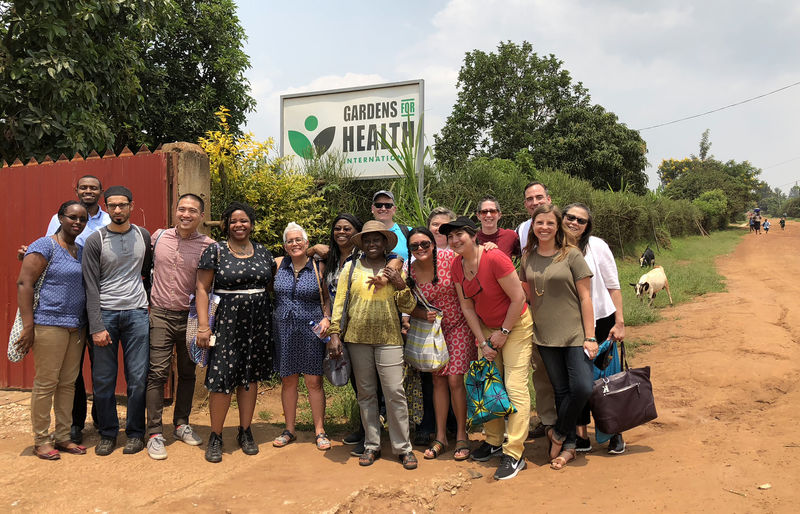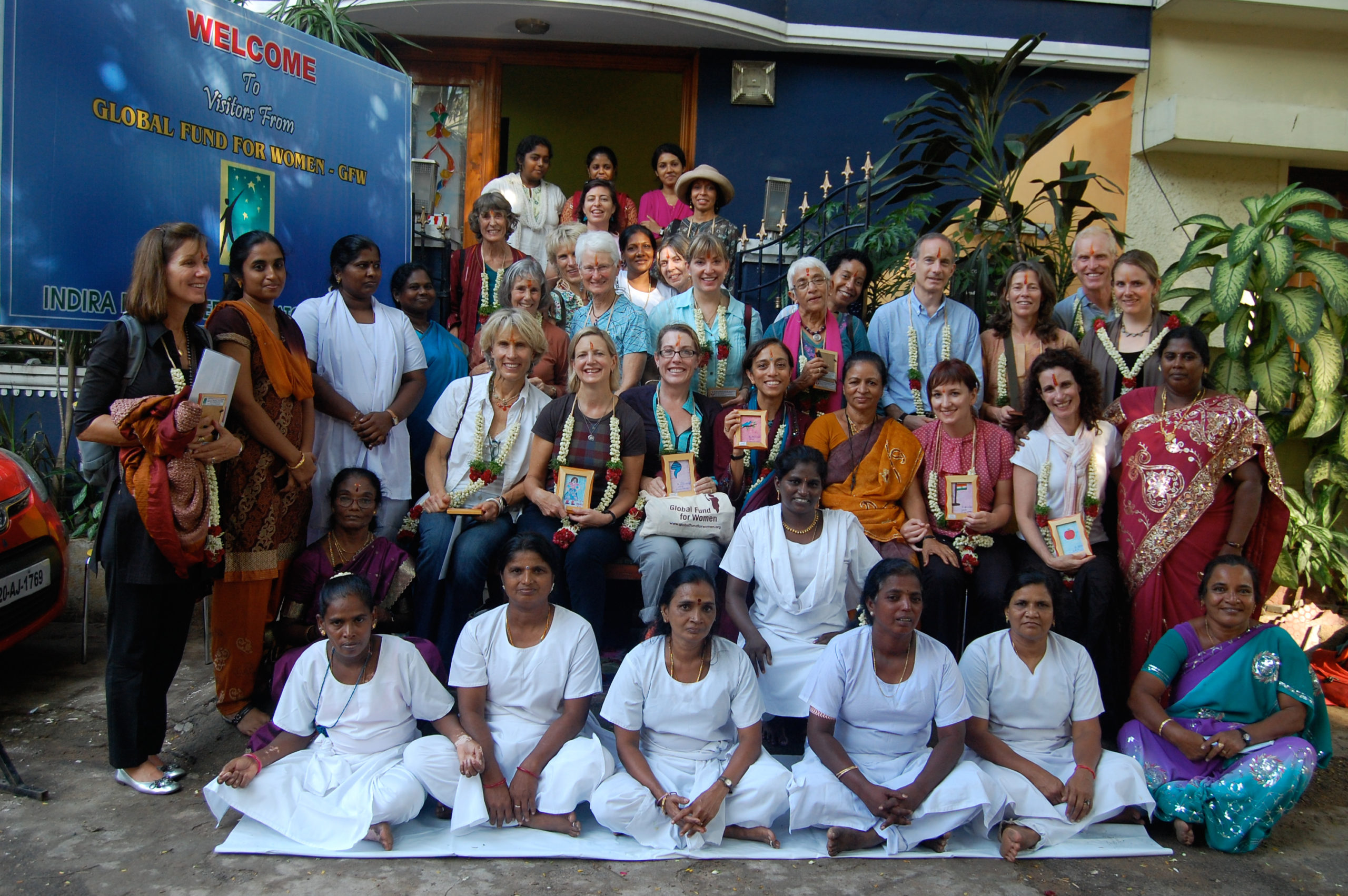By Julia Breul, Associate Director of Social Impact Journeys
In our experience working on the nuts and bolts of donor travel, we’ve seen that the soft side of program planning – the pieces that help ensure positive group dynamics – are essential to any given program’s success. The way a group creates bonds and connects with one another can influence outcomes in very tangible ways for an organization. In this blog we’ve laid out four essential program elements for supporting positive group dynamics on a donor trip.
Preparation
By focusing all of your energy and resources on how to make the travel component of a donor travel program a success, you may overlook the importance of preparing travelers for the journey ahead. Intentionally preparing the travelers in advance of a trip allows you to lay a foundation for positive group dynamics and empower the group to be culturally aware and sensitive while on site visits. In an ideal world, you would be able to bring the travelers together in advance of the site visit for an in-person retreat with discussions centered around what to expect from the site visit – logistically, emotionally, and culturally.
In lieu of in-person retreats, consider hosting virtual retreats or preparatory meetings for the group. Consider structuring sessions with the following key topics:
- Introductions and an opportunity to begin to get to know each other
- An effort to establish some baseline group expectations
- A high-level overview of social and cultural norms in the destination
- An overview of what to expect logistically – a run-through of the itinerary and explanation of what the site visits will entail
- An overview of what to expect emotionally – how long the days will be, some surprising things they may be confronted with in the field, and recommendations for how to practice self-care while traveling
- Provide engaging and informative resources (books, articles, videos, websites, etc.) to better prepare on their own for the trip
Establishing Group Norms
Establishing group norms around what individuals expect from one another before or at the start of a donor trip can do a tremendous amount to create positive group dynamics from the very beginning. We recommend creating a structured time for the group to connect with each other and share what behaviors, rules, expectations, or norms they want the group to follow while traveling together. Once you have a set of norms designed and agreed upon from your participants, there will be a shared understanding of how to behave and how donors will show up for each other.
Below are some unique norms and standards we’ve seen adapted by groups in the past that have contributed to positive group dynamics:
- Agree that time is a shared resource, and commit to being on-time for your fellow travelers and those who have taken time out of their days to host the group
- Be welcoming and open-minded by encouraging others to share thoughts and ideas that may differ from your own, and thoughtfully listening to others
- While someone else is speaking, let go of what you want to say next, and be truly present and attentive to their words
- Avoid speaking in acronyms that the whole group doesn’t understand
Creating Learning Circles
Creating safe spaces for reflection and debriefing the experiences donors have on these trips is essential to creating and protecting positive group dynamics. According to experiential learning theory, opportunities for reflective observation are essential to genuinely transformational experiences. Furthermore, holding debriefs for your donors shows that you value their ideas, thoughts, and partnership. Many trip planners shy away from debriefing because they don’t feel equipped to facilitate challenging conversations, but addressing and decompressing the profundity and intensity of site visits deepens the donor’s connection to and increases likelihood of further supporting your mission.
Revisiting the group norms you established at the beginning of your journey is essential to making debriefs feel comfortable for all. Hopefully these norms include mutual respect, inclusivity, and commitment to learning and growing through the experience. Asking donors to be fully present, put away their phones and cameras, and commit to sharing and listening openly with one another is important. For adults, an intentional and formal debrief may be out of the norm. It is important to hold them frequently and consistently throughout the trip, as trust will build through practiced regularity.
The ability of donors to connect with and learn from each other is a hidden asset that organizations should nurture. They are in each other’s peer group, they care about a shared topic, and learning from each other can greatly deepen their connection to your organization and forge relationships that can later be leveraged for your organization’s cause.
Time to Disconnect
A piece of feedback we commonly see from travelers is that while the trip was wonderfully planned out, they only wish that they had a little more unstructured time. We tend to think that when someone is traveling far from home, they want to seize every moment abroad by staying extremely busy. Sometimes in order to truly seize the moment, to bring their best self to the scheduled programming each day, travelers need the space to unwind, relax, explore, or process on their own.
In a recent conversation with Lori Barra, Executive Director of the Isabelle Allende Foundation and Philanthropist, we discussed the importance of giving travelers this time on donor trips. Lori told us, “One thing that I’ve found hard on group trips, is that because you try to cram in as much as you possibly can in only a few days, there is not enough free time to just walk and roam. When that does happen, I see that the group is more at ease. I think that everyone needs that break during the day. Sometimes by doing less, it’s doing more for the group. Everyone needs their own space at some points. It is exhausting to be on a bus all day, sit with people from a different culture and try to understand and take it all in… These trips can be emotionally exhausting due to the content.”
Moreover, it’s possible that it’s during these unstructured moments that the magic happens. Two people who did not know each other prior to the trip will form a close friendship while walking to find their own lunch. Another traveler may share their yoga or meditation practice with the group. Or, a traveler may take the time to go off on their own and visit a site they’ve been wanting to see all of their lives. They might take a minute to process the emotions and experiences of the day, and come back to the group with an incredibly powerful question or insight. By allowing travelers to take a moment to disconnect from the content, they often come back to it with more attention, energy, and connection.
Julia Breul is Associate Director of Social Impact Journeys at Elevate Destinations. Read more about Elevate Destinations’ Donor Trips.


